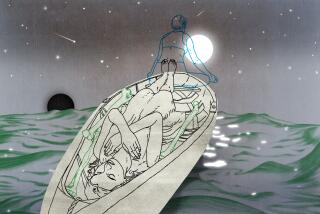NONFICTION - March 6, 1994
- Share via
HOW WE DIE: Reflections on Life’s Final Chapter by Sherwin B. Nuland, M.D. (Alfred A. Knopf: $24; 269 pp.) “(Cancer’s) first cells are the bastard offspring of unsuspecting parents . . . ,” says Sherwin B. Nuland, M.D. in his newest book, “How We Die.” “In the community of living tissues, the uncontrolled mob of misfits that is cancer behaves like a gang of perpetually wilding adolescents. They are the juvenile delinquents of cellular society.”
Although this is more passionate than most of Nuland’s descriptions of medical phenomena, one still gets the feeling that for him disease and major organs have a consciousness. They each possess real personalities. Intelligence. That sort of sentiment is unexpected from a book whose purpose is to explain, from a medical standpoint, various types of death.
Nuland’s ability to imbue the human body with emotional characteristics works both for and against him. On the one hand it’s an extremely effective teaching device. When, as part of an explanation, Nuland writes, “The failing heart thus outsmarts the kidney . . .” he is setting up conflict and drama. It becomes impossible not to feel sadness for the heart who continues trying valiantly to circulate blood even when the entire system has shut down against it. Or the poor kidney who receives the wrong message.
But on the other hand, Nuland has given so much feeling to his depiction of a dying body that the area lacking in feeling is strikingly obvious. There’s no hope. Nuland is skeptical, at best, about any afterlife. He maintains that very few people die with dignity. Terrible suffering is inevitable. New age thought he seems to regard with disdain. So, what’s the point? Why even get out of bed?
Only in the last twenty pages are we given a larger picture and though the final chapter is filled with encouragement, the road to get there can be difficult.
More to Read
Sign up for our Book Club newsletter
Get the latest news, events and more from the Los Angeles Times Book Club, and help us get L.A. reading and talking.
You may occasionally receive promotional content from the Los Angeles Times.










